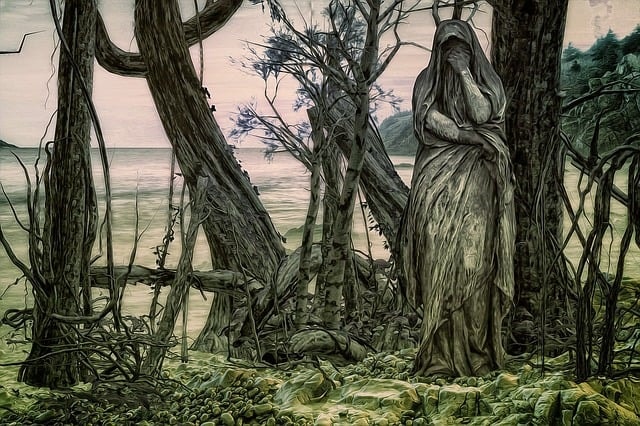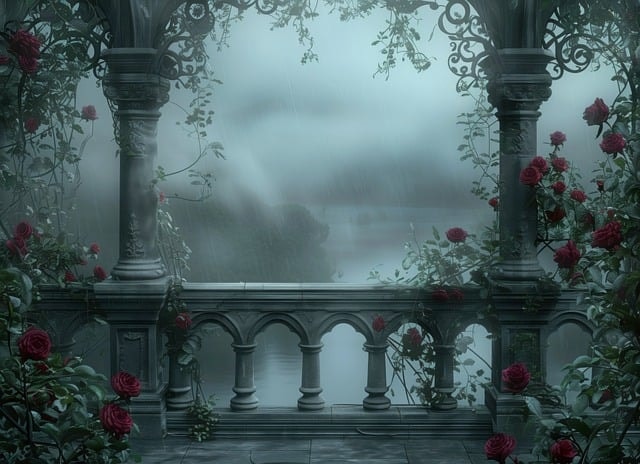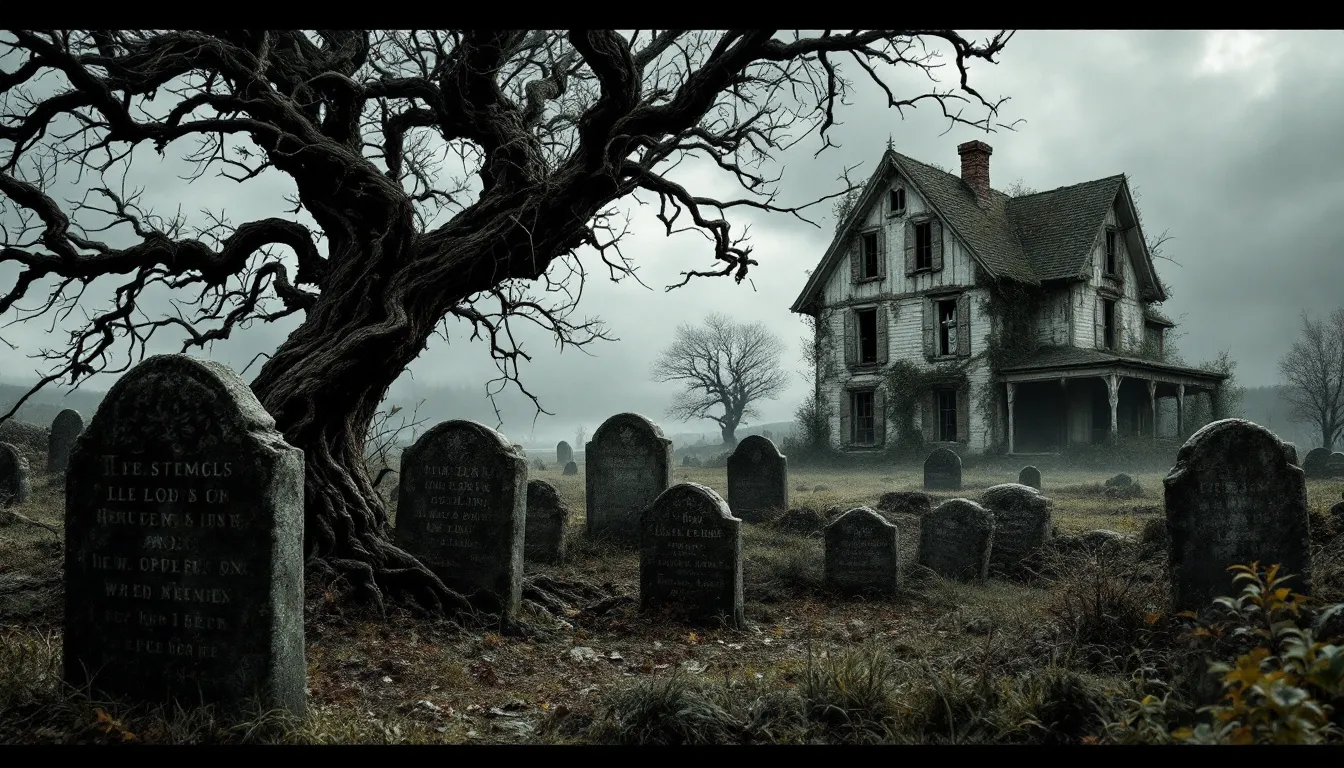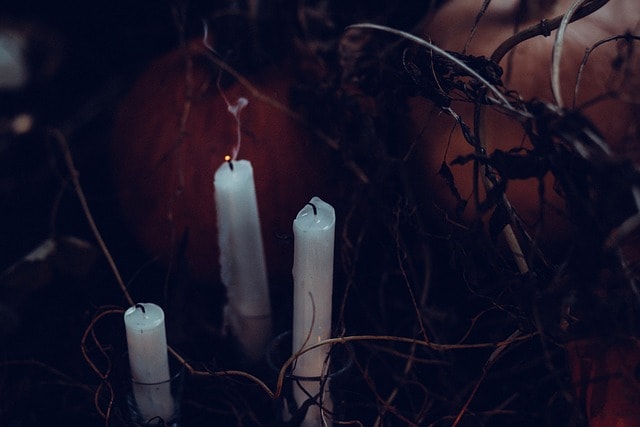
Exploring Gothic America: A Journey Through Dark History and Culture
Gothic America delves into the eerie and complex elements that define American culture and history. This article explores how Gothic themes are woven into American literature, art, and broader cultural expressions. You’ll discover the roots of American Gothic fiction, iconic works like Grant Wood’s ‘American Gothic,’ and how these elements reflect America’s darker historical and social issues.
Key Takeaways
-
American Gothic literature serves as a cultural lens, intertwining historical themes and psychological depth to reflect the complexities of the nation’s identity.
-
Grant Wood’s ‘American Gothic’ symbolizes rural American values and has inspired numerous parodies, illustrating its cultural impact and significance in discussions about American identity.
-
Gothic themes, characterized by isolation and psychological horror, have permeated various aspects of American culture, influencing literature, film, fashion, and popular media.
The Gothic Tradition in American Literature

American Gothic literature serves as a cultural lens through which we can examine the nation’s history. Intertwining classic Gothic elements with themes like conflict, moral dilemmas, and racial tensions, this genre offers a distinctive view on the nation’s soul. American Gothic literature is rich and multifaceted, reflecting the complexities of the nation’s identity.
The American Gothic novel combines the eerie atmospheres and psychological depth of classic Gothic fiction with uniquely American themes and settings. This genre has evolved to address various societal issues, making it a powerful tool for exploring the darker aspects of the American experience. From the early pioneers who laid the groundwork to the contemporary authors who continue to push boundaries, American Gothic literature remains a vital part of the nation’s cultural fabric.
Early Influences and Pioneers
The roots of American Gothic fiction can be traced back to the early influences of authors like Edgar Allan Poe and Nathaniel Hawthorne. These literary giants significantly shaped the genre through their exploration of psychological themes and moral dilemmas. Poe, with his emphasis on the psychological aspects of horror, as seen in works like “The Fall of the House of Usher,” delved into themes of decay and madness that became characteristic of the Gothic genre.
Nathaniel Hawthorne, with works like “The House of the Seven Gables,” infused his narratives with a deep sense of ancestral legacies and haunting memories.
Another early contributor was Charles Brockden Brown, whose works laid the foundational stones for what would become a rich and enduring genre. These pioneers not only crafted stories that delve into the human psyche but also used specific buildings and houses to symbolize the history and trauma of families, influencing the characters’ fates.
Southern Gothic
Southern Gothic literature stands out for its unique blend of grotesque elements, decayed settings, and dark themes that reflect the complexities of southern life and identity. William Faulkner is one of the most prominent authors within this subgenre, known for his rich narratives that explore themes of moral ambiguity and social issues. His works, such as “The Sound and the Fury” and “As I Lay Dying,” exemplify the Southern Gothic’s focus on psychological depth and the human condition.
Southern Gothic often explores the horror-filled social reality of the South, depicting a world where family curses, decayed mansions, and grotesque characters are commonplace. Its ability to capture the region’s historical and societal issues makes Southern Gothic a powerful tool for exploring darker aspects of southern identity and culture.
African American Gothic
African American Gothic addresses themes of despair and survival, often arising from the legacies of slavery and racial inequality. It offers a unique perspective on American history, reflecting the nation’s traumas and collective psyche. Authors like Toni Morrison have incorporated Gothic elements to confront America’s historical and racial complexities, enriching their narratives with folklore and cultural history.
African American Gothic literature engages with themes of identity and survival, offering a powerful commentary on the nation’s past and its ongoing struggles. Revisiting traditional Gothic elements while addressing contemporary social anxieties, this genre continues to evolve, remaining vital to American literature.
Grant Wood's "American Gothic"

Grant Wood’s “American Gothic” is a national icon that has profoundly impacted American culture and art. This painting, often interpreted as a symbol of rural America, reflects themes of tradition, steadfastness, and the complexities of rural life during the 1930s. “American Gothic,” Grant Wood’s American masterpiece, captures the essence of Americana, with its portrayal of a stern-faced farmer and his daughter, evoking a sense of traditional American values.
“American Gothic” has had a cultural impact that extends beyond its initial reception. It has inspired countless parodies and references across media, solidifying its status as a cultural icon. Its continued relevance in contemporary discussions about American identity and the perception of rural life speaks to its enduring legacy.
Symbolism and Interpretation
“American Gothic” is rich in symbolism and open to various interpretations. The couple, often seen as a farmer and his daughter, reflects ambiguity in their expressions and the era’s traditional values. Their stiff posture and clothing evoke old family photographs, symbolizing the steadfastness and conservatism of rural American life.
“American Gothic” encapsulates themes of Americana and has generated numerous interpretations over the years. This ambiguity and depth in symbolism have contributed to its status as one of America’s most famous American paintings, continuing to captivate audiences and spark discussions.
Cultural Impact and Parodies
The cultural impact of “American Gothic” is undeniable, inspiring countless parodies and references across popular culture. From commercials to TV shows, the painting’s imagery has been used to comment on societal issues and reflect cultural concerns, showcasing its lasting relevance.
These parodies often highlight its status as a cultural touchstone, reflecting its enduring impact on American identity. The widespread recognition and adaptation of “American Gothic” in media underscore its role as a national icon, bridging high art and popular culture.
Display and Legacy
“American Gothic” has been prominently displayed at the Art Institute of Chicago since its debut exhibition in 1930, where it has become a defining piece of American art history. Winning a bronze medal in a painting competition that same year further solidified its status.
Its placement in the Art Institute of Chicago has made it essential to the museum’s collection, enhancing its recognition as a symbol of American culture and art. Its legacy continues to grow as it remains central to discussions about American identity and artistic expression.
Gothic Novels and National Identity

Gothic novels have significantly shaped America’s national identity, engaging with social, political, and cultural concerns. These narratives often critique the moral landscape of the nation, focusing on themes of isolation, alienation, and the darker aspects of the human experience. The American landscape in Gothic literature frequently symbolizes cultural and national identities, reflecting societal beliefs, priorities, and anxieties.
Incorporating elements of horror and psychological depth, American Gothic fiction offers a unique lens to explore the nation’s historical struggles and collective psyche. From the African-American Gothic’s illumination of enslavement horrors to the Southern Gothic’s portrayal of decayed settings and moral ambiguity, these narratives offer profound insights into America’s identity.
Historical Contexts
American Gothic emerged in response to significant historical events, particularly during the tumultuous periods of the Revolutionary and Civil Wars. The social upheaval of the Revolutionary War fostered narratives examining the consequences of conflict within society, including themes of liberty and questioning authority.
Similarly, the Civil War era saw Gothic narratives reflecting the traumatic divisions in American society. These complex historical circumstances shaped the themes and narratives within Gothic literature, providing a rich backdrop for exploring the nation’s identity.
Key Works and Authors
Key American Gothic writers like Edgar Allan Poe, Nathaniel Hawthorne, and Herman Melville significantly shaped the genre’s foundations. Their works, including Poe’s “Narrative of Arthur Gordon Pym” and Hawthorne’s “The House of the Seven Gables,” are seminal pieces influencing the genre.
Mary E. Wilkins Freeman is another notable author whose contributions to Gothic literature are recognized for their depth and complexity. These authors and their works have established a literary stronghold that continues to inspire and shape American Gothic tradition.
Contemporary Gothic Fiction
Contemporary American Gothic literature continues earlier traditions, exploring themes of psychological horror and societal issues. Works like Charlotte Perkins Gilman’s “The Yellow Wallpaper” illustrate the psychological aspects of American Gothic, highlighting its enduring relevance.
Modern authors like Stephen King have expanded the genre, intertwining traditional Gothic elements with contemporary social anxieties. This evolution ensures American Gothic fiction remains a powerful medium for exploring the darker facets of human experience and societal fears.
The Role of Setting in American Gothic

Setting plays a crucial role in American Gothic literature, often significantly contributing to the eerie atmosphere characteristic of the genre. Whether decayed plantations of the Southern Gothic or isolated farmhouses of rural America, landscapes in American Gothic narratives embody emotional states and reflect societal issues. These settings reflect the psychological states of the characters, amplifying themes of dread and foreboding.
The unique use of setting in American Gothic literature creates a haunting and evocative sense of place, drawing readers into the dark and complex worlds these stories inhabit. Exploring different settings that define American Gothic fiction, from rural landscapes to urban environments and the symbolic power of specific houses.
Rural America
Rural settings in American Gothic literature often evoke loneliness and fear, reflecting characters’ isolation and their connection to the land. This isolation enhances themes of alienation and dread, creating a foreboding atmosphere central to the genre. The Gothic window in Grant Wood’s “American Gothic” symbolizes traditional values and conservatism, linking the artwork to rural ideals.
The figures in “American Gothic,” with their stiff poses and traditional clothing, embody rural values, suggesting a deep connection to the land and steadfastness. This portrayal of rural America in literature and art underscores the region’s significance in shaping the nation’s identity and cultural heritage.
Urban Landscapes
Urban environments in American Gothic literature mirror the anxieties of modern society. They reflect the complexity and chaos of urban life, often highlighting themes of alienation, isolation, and societal decay. Modern American Gothic fiction continues to evolve, incorporating urban settings and addressing current societal fears and anxieties.
Depicting urban landscapes in Gothic narratives allows deeper exploration of contemporary issues, blending traditional Gothic elements with modern realities. This combination creates a powerful and relevant form of storytelling that resonates with readers and reflects the human experience in a rapidly changing world.
The Actual House
In Gothic narratives, houses often embody family curses and historical traumas, serving as pivotal characters. These structures symbolize the weight of the past and the inescapable nature of familial legacies. Nathaniel Hawthorne’s “The House of the Seven Gables” uses the house to reflect the characters’ histories and burdens.
Graphic novels and video games frequently incorporate Gothic themes, blending visual storytelling with dark narratives and complex characters. This modern adaptation of Gothic elements continues to captivate audiences, demonstrating the genre’s versatility and enduring appeal.
Gothic Themes in American Culture

Gothic themes, including isolation and psychological horror, have significantly influenced various aspects of American culture beyond literature and art. These themes resonate deeply within the American psyche, reflecting the nation’s historical traumas and cultural concerns. From the eerie landscapes of American Gothic fiction to the dark aesthetics of music and fashion, the Gothic tradition extends into multiple cultural expressions, revealing gothic america traces throughout the nation.
Examples of Gothic influences in modern culture include the Harry Potter series, noir films, and the Twilight franchise. These cultural artifacts demonstrate the adaptability of Gothic themes, bridging traditional literature and contemporary media.
Film and Television
Films like “The Shining” and “The Witch” illustrate American Gothic themes through narratives of isolation, madness, and the supernatural. Classic horror films and modern series often depict Gothic elements, showcasing a blend of terror and romance that resonates with audiences. Television shows like “True Blood” and “The Walking Dead” reflect contemporary Gothic themes, linking them to cultural crises and societal fears.
Modern TV series, such as “The Haunting of Hill House,” adapt Gothic motifs while addressing issues like family trauma, demonstrating the genre’s relevance to contemporary audiences. An analysis of Gothic themes reveals their significant influence in American film and television, reflecting both traditional horror motifs and modern cultural anxieties.
Music and Fashion
Gothic aesthetics have influenced American music, with genres like goth rock and darkwave drawing on themes of melancholy and the macabre. Lyrical themes often explore darkness, existentialism, and the macabre, creating a distinct sound that resonates with fans of Gothic culture. Fashion trends inspired by Gothic culture frequently include dark colors, vintage styles, and elements that reflect a sense of mystery and rebellion.
These trends in music and fashion underscore the versatility and enduring appeal of Gothic themes, highlighting their influence on popular culture. By embracing the aesthetics and themes of the Gothic tradition, these cultural expressions continue to shape America’s identity and reflect its complex history and societal concerns.
Popular Culture and Media
The representation of Gothic elements is prevalent in modern media, including video games and graphic novels, showcasing the adaptability of Gothic themes. These media forms often explore themes of horror and existential dread, blending dark aesthetics with popular storytelling.
By incorporating Gothic elements, these modern cultural artifacts continue to captivate audiences and reflect the enduring impact of the Gothic tradition on American culture.
Summary
Exploring Gothic America reveals the profound impact of Gothic themes on the nation’s literature, art, and culture. From the early influences of Edgar Allan Poe and Nathaniel Hawthorne to the contemporary adaptations in film, television, music, and fashion, the Gothic tradition remains a vital part of America’s cultural identity. This journey through dark history and culture highlights the genre’s versatility and its ability to reflect societal concerns and historical traumas.
Gothic literature and art continue to captivate audiences, offering a lens through which we can examine the complexities of the human experience and the nation’s identity. As we delve deeper into the shadows of Gothic America, we uncover the rich tapestry of stories, symbols, and themes that define this unique genre. The enduring appeal of the Gothic tradition reminds us of the power of storytelling and the profound impact of art and literature on our understanding of the world.
Frequently Asked Questions
What are the key characteristics of Southern Gothic literature?
Southern Gothic literature is defined by its use of the grotesque, decayed settings, and dark themes that explore the complexities of Southern life and identity. These characteristics create a distinct atmosphere that engages readers with the region's cultural and historical nuances.
How does "American Gothic" by Grant Wood reflect American values?
"American Gothic" embodies American values through its depiction of tradition and steadfastness, illustrating the complexities of rural life in the 1930s. The stern expressions of the farmer and his daughter further symbolize the resilience and commitment of American families.
Which historical events influenced the emergence of American Gothic literature?
The emergence of American Gothic literature was significantly influenced by the Revolutionary and Civil Wars, as these historical events prompted narratives that explored societal conflict and the resulting trauma within American society. This genre reflects the darker aspects of the human experience shaped by these tumultuous times.
How do rural settings enhance themes in American Gothic literature?
Rural settings enhance themes in American Gothic literature by evoking feelings of loneliness and fear, which reflect characters' isolation and their connection to the land. This atmosphere amplifies themes of alienation and dread, making it integral to the genre.
In what ways have Gothic themes influenced American popular culture?
Gothic themes have profoundly influenced American popular culture through their integration into film, television, music, fashion, and modern media such as video games and graphic novels. This enduring appeal showcases their adaptability across various cultural expressions.




